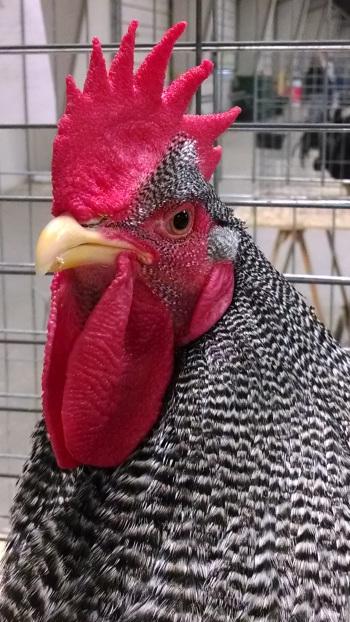 We’re heading into the colder months and new-time chicken owners are already starting to have anxiety attacks. “How, oh how will I be able to keep my babies warm?” they fret as they look into expensive heaters and even sweaters knit for chickens. (Go ahead and ask me how I know. I was once a first time chicken owner too, you know.)
We’re heading into the colder months and new-time chicken owners are already starting to have anxiety attacks. “How, oh how will I be able to keep my babies warm?” they fret as they look into expensive heaters and even sweaters knit for chickens. (Go ahead and ask me how I know. I was once a first time chicken owner too, you know.)
Chickens have always known what to do in cold weather, as the owner you simply need to provide the basics (and nope, no matter how cute, a sweater is not a basic.)
I had one reader contact me to ask about winter preparation, she wanted to use hay on the floor of the outdoor run and she wanted to put tarps up to protect her flock from wind and snow in the run (the birds all had access to a fully enclosed coop from the run area.)
Before you do anything, I told her, just take a deep breath. I live in New Hampshire where we also have very cold winters. Your chickens will be able to figure out how to survive even the coldest winter on their own.
That is *if * you make sure they have a well-ventilated coop with plenty of space for your birds to roost. I know that, especially when you think of your chickens as pets, it can be difficult to remember that chickens are and always have been outdoor birds. They already have this winter thing down.
With regard to the hay, I wouldn’t use it on the floor of a run (or coop) and this is why. Hay has a high water content (and if it’s dry it quickly absorbs water) this can lead to mold and fungal growth and if you have chickens standing on moldy material, it can sometimes cause foot and leg fungal problems.
In our coop we use wood chips and just spread them out. It seems to work fine and it protects our flock’s feet from direct contact with the snow.
In the winter, we also use the layering method which means we don’t clean out the coop or the run, we simply add more layers to it. This adds to general insulation and the natural composting that can occur gives the coop a little bit of heat. This, of course, means that you need to muck out a pretty rank coop early in the Spring, but it’s a relatively small price for comfort.
Be careful with using a tarp, I warned my reader. Again, if you trap water on a warm day, you are setting up perfect conditions for mold and fungus to grow. Instead, don’t worry too much about the outdoor run (it should have a roof or some kind of covering) if the chickens get too cold, they will roost together in the coop and they’ll be fine. Just make sure that there is a small amount of ventilation at the top of the coop for moisture (from breathing and poop) to escape or again, you run the risk of mold setting in.
Oh and as it was her first winter, I told my reader that her flock will not need any heating unit in the coop. I always tell my chicken class students that a heater is more for the owner’s guilt than it is for the chickens, if you don’t believe me, go out to the coop some night and slide your hand between two roosting chickens – it will be as warm as any feather bed.
I’ve also heard of too many coops burning down because a heater or lamp got knocked over. To me it’s not worth the chance.
In order to get ready for winter, do the prep work for your flock:
- Make sure the coop is secure and windproof
- Inspect the roost bars and replace any that may have splintered
- Dig out your water heater and make sure it works (or go out and buy one now), your flock will need access to melted (not warm water) at all times during the winter
- And throw in a few sources of high fat every other week (seed blocks, suet, chicken treats) to give them a nutritional boost when the temps get very low
If you have those bases covered, trust me on this one, your chickens will be able to take it from there.
***
Wendy Thomas writes about the lessons learned while raising children and chickens in New Hampshire. Contact her at [email protected]
Also, join me on Facebook to find out more about the flock (children and chickens) and see some pretty funny chicken jokes, photos of tiny houses, and even a recipe or two.
Like what you read here? Consider subscribing to this blog so that you’ll never miss a post. And feel free to share with those who may need a little chicken love.

